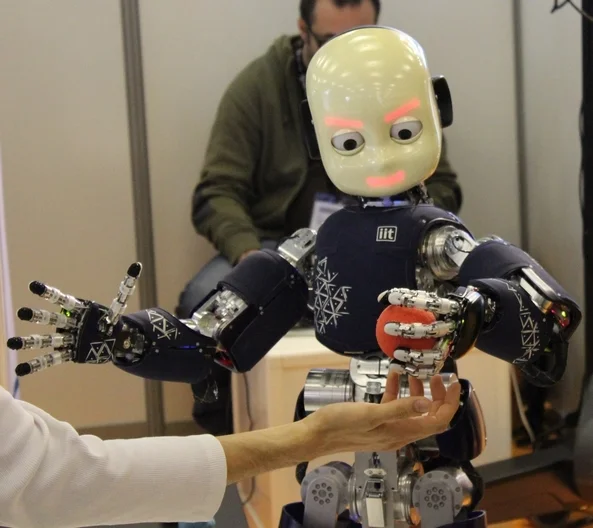If many of your customers are “sitting on their hands”— citing Brexit and Trump and Iran and US-China trade war—then your sales are flat, or declining; you must downsize your costs or upsize your productivity. Upsizing your people’s productivity is easy to say, hard to do. It’s always been tough to do, but now many of your people face constant change and face constant stress. For example, imagine working in one of the big four banks urgently completing many recommendations of The Royal Commission.
Read MoreA key to long term success is how well an organisation transforms to manage strategic accounts differently. Recently, we worked with a CEO of a large global client who decided the way of the future was managing their most important accounts in a structured way. Our recommended approach, which was not accepted, was completing a structural internal audit to see how they currently managed strategic accounts and then interviewing a few of their top accounts.
Read MoreEverything written about managing major accounts strategically has one theme: it’s not a marketing or sales campaign, it’s a leadership initiative driven by the C-Suite.
The overarching key to long-term success is how well the organisation changes to manage strategic accounts differently.
Read MoreMachines will, in the future, replace some of most people’s working tasks, replacing repeatable, ordered tasks. But machines are weak at understanding people’s mood, and developing and building trusting relationships. So, you will need to build and leverage the soft skills of your people to give you a competitive edge. You need to build your value proposition on the human skills in your company to provide differentiation.
Read MoreAs a lecturer in change management at AGSM, I talk with many professionals from different companies and industries. A few innovative companies are working on improving their customer experience and their employee experience. These innovative companies are introducing artificial intelligence (Ai) and increasing the skills of their people, particularly their social intelligence. These companies are making courageous decisions to invest in a time of uncertainty to create a competitive edge. In an increasingly challenging business environment, sitting back and waiting to see what the future will bring is a very dangerous strategy.
Read MoreThe robots are coming for all our jobs! Read newspapers or Google “jobs replaced by robots”. When I Googled “jobs replaced by robots” I got 85 million results and 95 results posted in a month. When I Googled “jobs replaced by AI” I got 12 million results and 183 results posted in a month.
So, are any jobs safe?
Read MoreExecutives regularly complain their departments are not working together well. In some large organisations, executives spend most of the time refereeing disputes between departments. Why does this happen?
Read MoreAs shareholders and executives continue to demand growing profits; companies must increase revenue or increase productivity. However, increasing revenue and increasing productivity are getting harder. Can artificial intelligence (Ai) be a way to improve productivity and gain a competitive edge? There are many articles on Ai filled with acronyms or technical terms - machines, algorithms and bots. The robots are coming - are you ready?
Read MoreHave you ever needed to change a large group’s thinking or behaviour? A difficult situation, but recent research can help with this. As always, remember to stay ethical, you can use this for good and bad.
How many people in a group do you need to change the minds of others?
Read MoreA small group of organisations are serious about increasing their performance using innovation. A larger group pay lip service to increasing their performance using innovation. Those that pay lip service are unaware of how their policies and practices can discourage innovation. What can discourage innovation? We explore some wisdom from the book, Seeing what others don't: The remarkable ways we gain insights by Gary Klein. Who?
Read MoreWhat insights did I get from attending last week’s Medical Technology Association of Australia’s (MTAA) summit on Value-Based Health Care?
Read MoreTo gain an advantage in an increasingly competitive marketplace, it is essential that your culture represents your strategy. So, how can you start changing your culture? You can make this complex or simple. Let’s assume you want to make a start, and you want to understand some practical levers you can pull to start change.
Read MorePeople rarely talk about the C word because it's not something easy to mention in business circles. Mention culture and at least one business person in the room will roll their eyes. Why? People are reluctant to talk about culture because they have seen many unsuccessful attempts to change the culture. Often these attempts use posters and coffee cups.
Most attempts to change culture fail. Why? Because it's tough and it's often an unequal fight between well-meaning management and the existing culture: a man and a shotgun versus a man and a tank.
So, should you give up? Start by understanding the risk.
Read MoreThe first barrier to change is most people don't like change. They tend to stick to what they know and what worked before. However, change is happening: like it or not.
Read MoreWe ended 2016 with a real wake-up call for everybody in a leadership, executive or management role – the status quo of business was disrupted.
Over the holiday break I would take a book down to the beach to read which inevitably attracted conversation from other beach goers, firstly on me being the only person reading a book with everybody else on some device.
I liked the book because it challenged some of my concepts around leadership and self-motivation and that is always a sign of a great book.
Read MoreHow do you manage organisational change with Strategic Account Management (SAM)?
Introducing a SAM program into your organisation must be treated as a major change initiative. Treating the project as purely a sales project is setting yourselves up for failure.
A SAM program takes time to get results and is an initiative to change organisational culture.
Read MoreThis blog follows on from previous blogs on organisations that are too good to change. In this link to a 13 minute TED video, Alison Sanders discusses the art and science of tracking trends. Apart from some fascinating trends, she discusses the importance of timing your action. Most organisations are too late because they do not prepare soon enough for the dramatic impact.
Read MoreOver the last couple of years, we have seen several organisations that are too good to change. But, how can organisations possibly be too good to change?
The answer is simple: they can deliver better profits this year doing almost exactly what they have always done.
Before you get too confident consider that a company's fall from grace can frequently be traced back to its time of greatest achievement!
Read MoreOne of the triggers for changing your organisation is time. Whether you realise it or not, when you design your organisation you build it to suit a timescale. The timescale for many organisations is the month. Every month your report sales, margins and profits. Doesn't everybody?
Let's look at how time affects your organisational design.
Read MoreMost development and change programs fail simply because they focus only on knowledge and facts and not on changing the mindsets of the individuals who will be affected by the change...
Read More













![With customer's you can't afford to lose, watch out for the C word [Culture vs IT]](https://images.squarespace-cdn.com/content/v1/5385613ee4b0883f7108f96f/1516678144609-EYAEY70NIV4AHEP2FHWE/employees+1+compressed.jpg)






